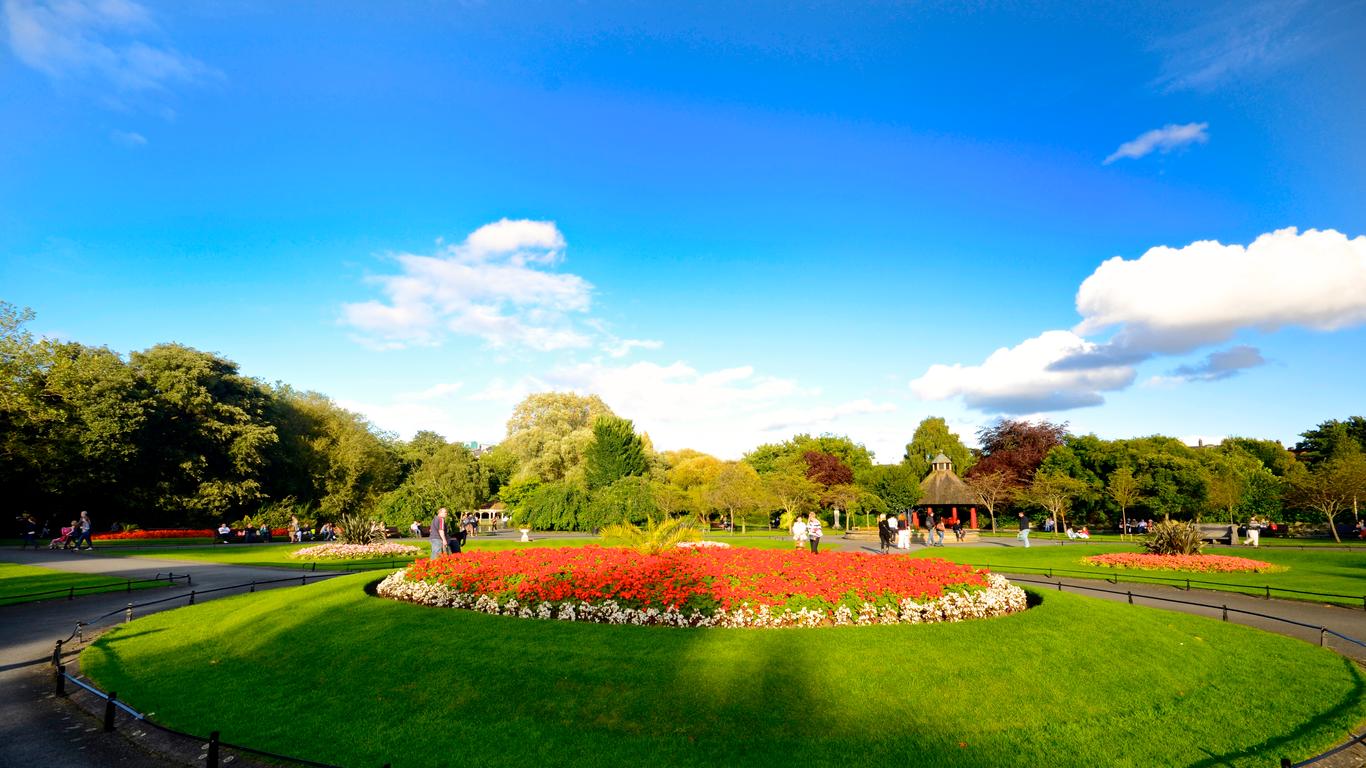Saint Stephen’s Green is an elegant Victorian park spanning nine hectares in the heart of Dublin. Once restricted to the local residents who lived around its perimeter, the green was opened to the public in 1877 by Arthur Guinness and has become a popular place for outdoor relaxation and leisure.
A walk through the manicured gardens takes you on a journey through Dublin’s remarkable history, with several sculptures commemorating the events and people that shaped the country. Take a closer look at the Green's 13 artworks and 400-year history on a guided walking tour, which is available every day of the week.
The green’s 3.5-kilometre walking path weaves through lush flowerbeds and along the ornamental lake. Stop to admire the decorative fountain, then let the kids run wild on the playground. Fringing the green are Georgian-style townhouses, cafes, and shops, such as KC Peaches Cafe and Stephen’s Green Shopping Centre.
Getting around St. Stephen's Green
Saint Stephen’s Green is a one-kilometer walk from Temple Bar and just 500 meters south of Trinity College. The eastern side of the green is easily accessed by bus, while the western side has the Saint Stephens Luas tram stop.





